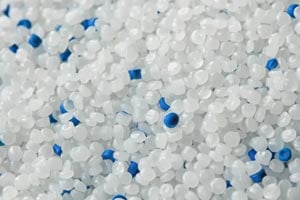Cast Film Extrusion
Cast films are typically used in packaging industry or as coating substrates in extrusion coating processes. In the cast film extrusion process, the melt is extruded through a wide die as a thin web and is cooled on a metal casting roll.
In cast film production, polymers are melted through a slot or flat die (extruded) to form a thin molten film. This film is attracted towards the surface of a chilled roller using the force of an air knife or vacuum box, where it immediately solidifies. The film then passes through a series of chill rollers before being edge-trimmed and typically wound on a roll. Some machines will extrude a number of films for a laminated final product.
- At a Glance
- Featured Solutions
Temperature monitoring helps to control that proper thickness and finish uniformity are maintained. Measuring the very thin film requires a specific narrow band spectral response for the infrared sensor. To avoid temperature misreadings due to transmitted radiation generated by a hot object behind the film, the sensor's spectral window must additionally coincide with the plastic's absorption band. Most thin-film materials with thickness' less than 0.25 mm (1 mil) have near-zero infrared transmission at either 3.43 µm, 7.9 µm, or both wavelengths.
Detection of die "bolt heater" problems is necessary to ensure uniformity of the die temperature, control roller temperatures and to detect film breakages.
- Measuring the temperature of the product directly instead of the oven or the dryer
- Temperature measuring using spot sensor for downstream film temperature measurement optimizes final product quality.
- Early detection of problems with the die bolt heater
- Causing a greater film thickness and tensile strength uniformity.
- Enhancing the surface finish uniformity and improving the final film shape stability
Get more information about Fluke Process Instruments solutions for this application



